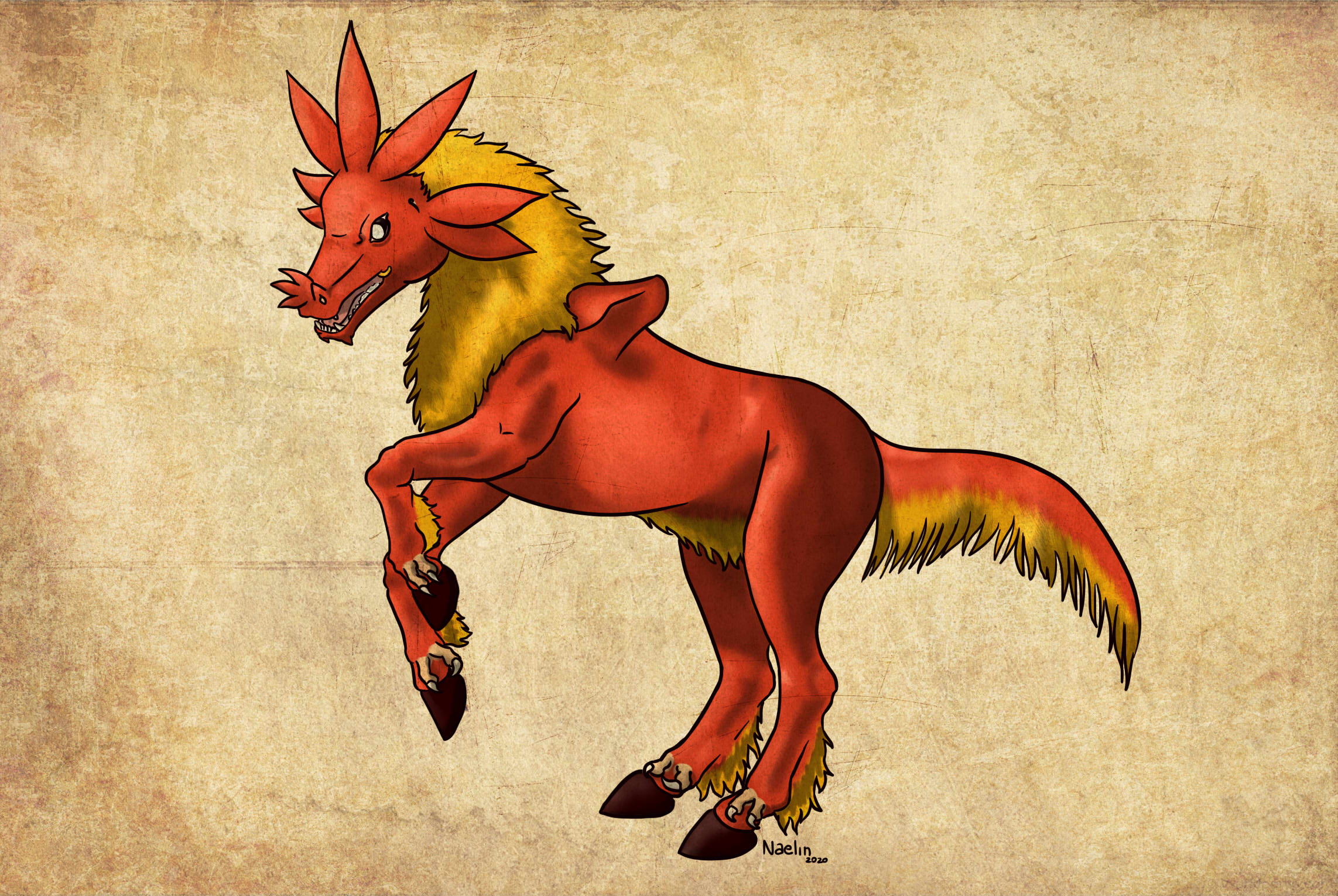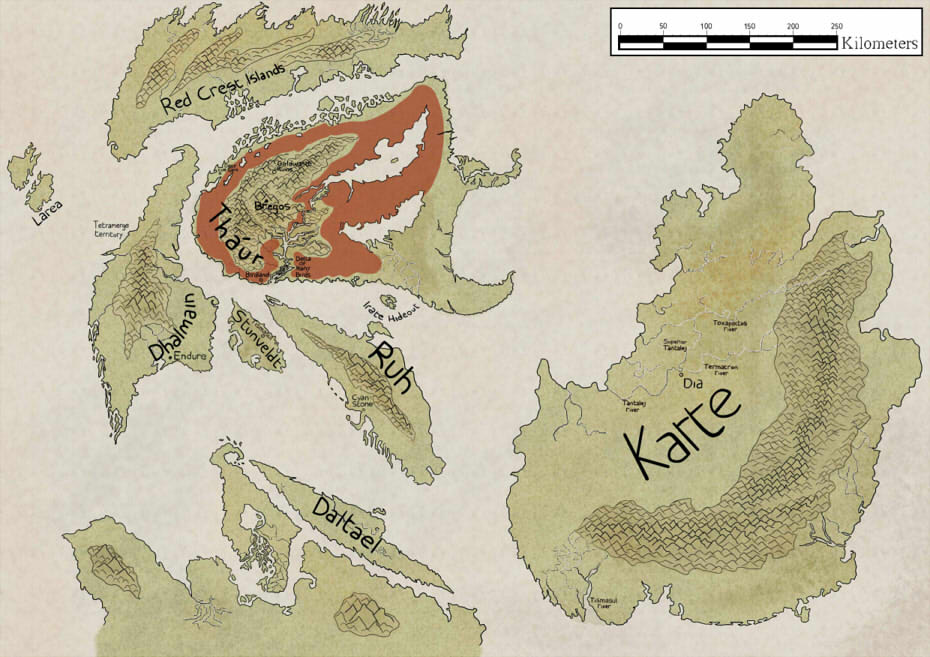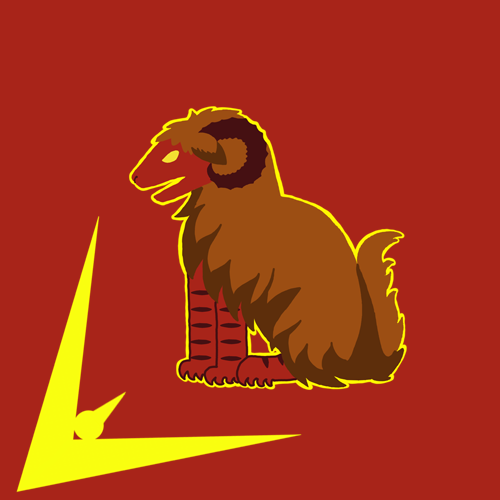Hierde
Physical Characteristics
Hierdes are quadruped omnivores that stand at approximately 1.55cm tall to the withers. They are covered by short, bright red fur on most of the body, and by a dense mane of yellow or golden fur on the neck. They also have long golden fur on the back of their feet, as well as a straight line of long red hair with golden tips that starts at the base of the sternum and runs through the belly to meet with the tail.Their feet end on a single hoof, surrounded by four clawed, naked fingers that don't seem to have a function and, just above their shoulderblades, they possess two big protrusions, with an slightly convex shape.
Their heads have an impressive look: Their eyes have white irises surrounded by a black sclera, looking inverted. They lack ears and their inner ear just ends in an opening at the sides of their head, and instead, they have seven fleshy, mobile appendages with an elongated drop shape, three at the top of their head and two at each side. Their nostrils open at two triangularly-shaped protrusions, which is matched by two triangular fleshy appendages at the chin. Between the nostrils, they have a three-pointed appendage that they can raise as a sign of aggression or excitement. At the corners of the mouth, they have two golden, curved growths, that look like rings pierced trough them.
Behaviour
The hierdes have symbiotic relationship with the sceapilion, a herd creature for which the hierdes act as guide, protector and leader.One hierde (or sometimes two) will lead an entire group of sceapilions and protect them aggressively against predators and any other threat. In exchange, the hierde will kill and eat sceapilions occasionally, usually by culling those that get injured and would slow down the herd otherwise. The size and general wellbeing of their herd is also used by the hierde as a way to attract potential mates. While hierdes are classified as a pactual species, it is highly unusual for them to make pacts outside of their own species and the nature of their relation to the sceapilions is believed to be instinctive. During mating season, the hierdes will make their groups met with each other, and once they found a suitable partner, they will merge the herds for the duration of the mating period, and, in some cases, the male will stay over until the female gives birth, having the herds of sceapilion fused together. This is an stressful period for the sceapilions, but it does not usually cause major issues.
Current situation
The hierdes are, unfortunately, at the brim of extintion. The last century had several waves of internal migration of societarians abandoning and then re-populating entire areas of the island, pushing the sceapilion herds to unknown and dangerous territories, and making the different herds get separated from each other, in some cases by cities filled with people.As hierdes need to have the different sceapilion populations to meet to find themselves a mate, these physical separations made their reproduction extremely difficult, and the delving on more dangerous territories made them become stressed and at a disadvantage. Only a few hierdes are left, and these have seem to start to find themselves forced to adapt to survive.
Lifespan
45 years
Average Height
1.55m to the withers
Average Weight
450kg
Geographic Distribution







Noooo, I was so sad to read that they were on the brim of extinction... Apart from that devastating fact, the species is really awesome looking!!
Thank you Badger <3 Fun fact, I created this species at least 13 years ago :D